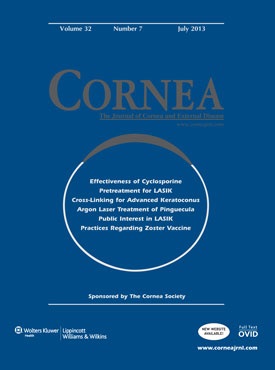Abstract
PURPOSE: To report the unusual association of bilateral corneal keloids and anterior segment mesenchymal dysgenesis in a child with Rubinstein-Taybi syndrome.
METHODS: Case report of a 2-year-old boy.
RESULTS: Excision of the epicorneal mass in the right eye was followed by recurrence of the lesion. Multiple penetrating keratoplasties were unsuccessful in reconstructing the anterior segment because of recurrent corneal epithelial breakdown, suggesting limbal stem cell insufficiency. Histopathology and electron microscopy of the excised mass lesion showed features typical of a corneal keloid: thickened keratinized epithelium, absent Bowman's layer, and fibrovascular hyperplasia, with haphazard orientation of the collagen lamellae. Ultrasound biomicroscopy and intraoperative findings suggested a diagnosis of Peter anomaly, but genetic analysis did not show a PAX6 mutation.
CONCLUSION: The findings in our patient add to the spectrum of ocular changes described in Rubinstein-Taybi syndrome and confirm earlier reports of poor ocular prognosis in corneal keloids and Rubinstein-Taybi syndrome.

